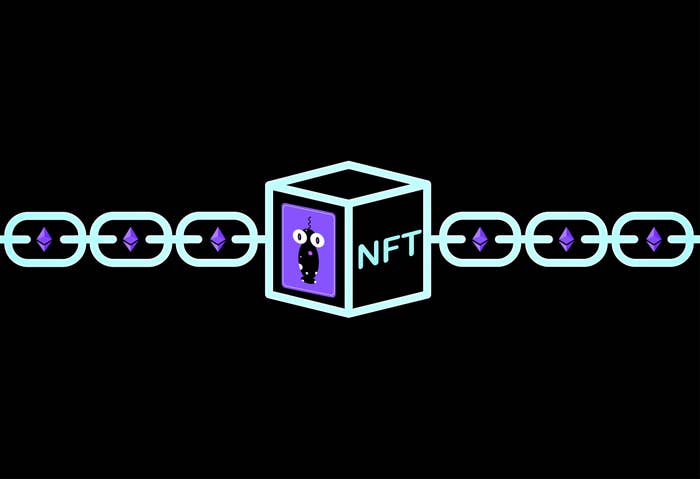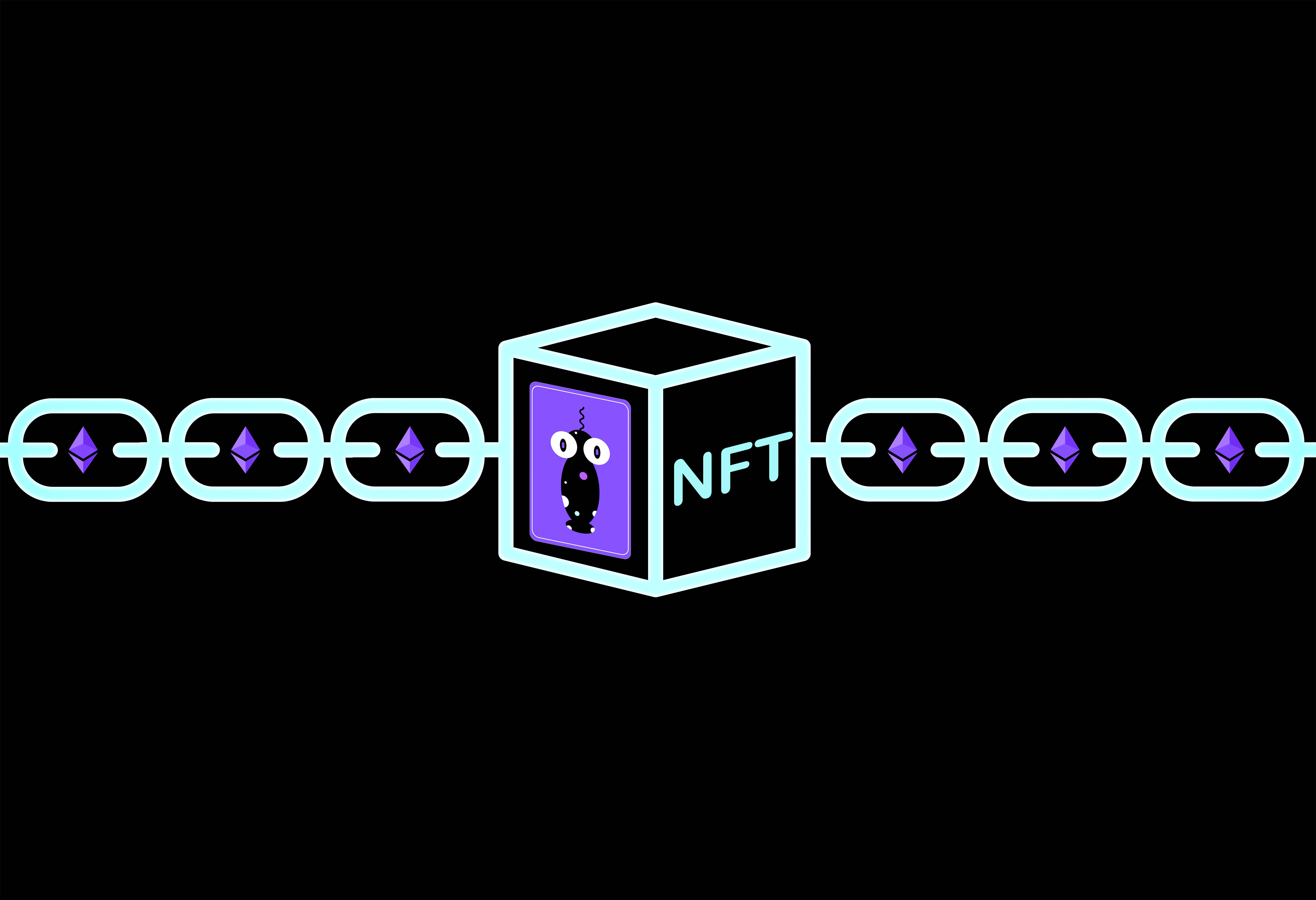
NFTs, better known as non-fungible tokens, aren’t necessarily new, but how they’ve been used has caused a frenzy online. How hype has the frenzy been, you ask? Well, the new “it”thing has created capacity rooms on Clubhouse and made interested parties open multiple browser tabs to figure out what is going on. NFTs, or cryptopmedia, can include any type of digital media: art, memes, collectibles, photos, etc. The terms “NFT” and “cryptomedia” have been used interchangeably, but as the community grows, the tokens will have a more solid definition in the virtual world.
In Zoom conversations with Bobby Hundreds, co-founder of The Hundreds, and LA-based NFT artist Ryan Wilson, known as ThankYouX, it’s hard not to get sucked into the hype. Bobby’s enthusiasm comes from curiosity and genuine interest. He will happily talk for hours on the subject, offering different ways of thinking about cryptomedia and how it’s altering the physical world. ThankYouX is part of the wave of working artists in the booming industry, collaborating with Nifty Gateway for his drops on the digital marketplace—animated graphics, images, photos, and videos can sell for millions in cryptocurrency.
Sites like Rareable allow users to establish a mint on everything from art and music to fashion. Minting essentially stakes your claim on an item, giving you the ability to own it outright or put a “for sale” sign on it. NFTs, by their very nature, are transformative in their use. Anything online can be an NFT and, in turn, create an exchange between people without the need for a middleman. Currently, the fastest-moving NFTs are in the art space, but NFTs can be used for one-of-a-kind experiences like concerts or direct access to artists. Kings of Leon released their latest album, When You See Yourself, as an NFT, with access to exclusive vinyl and other perks.
It all sounds fantastic, the idea of making money online with your work, but as more people get into the market with the same fervor as the early days of Bitcoin, the question becomes: What makes NFTs different from cryptocurrencies, and is the interest enough to sustain the spike in demand? We spoke to Bobby and ThankYouX about the phenomenon.
Bobby Hundreds has been down the rabbit hole of the NFT world, frequently posting (and minting) his findings on The Hundreds blog. He shares his insights in massive Clubhouse meets, one of which was supposed to feature Elon Musk (who missed the chat because he had “phone trouble”). When asked to explain what an NFT does, Bobby smiles. “The best way to explain NFTs to a layman is that they [NFTs] are certificates, and these certificates, they’re really just proof that you own a piece of art,” Bobby tells Complex. “It’s not a piece of art in our physical real world that we live in IRL; these are digital pieces of art that are recorded on what is called the Ethereum blockchain.”
Often connected with cryptocurrency, the blockchain is encrypted with a digital signature that cannot be duplicated and ensures that the NFT sold is authentic, making it a one of one for the buyer. NFTs are released in limited numbers, like the model used by NBA Top Shot, but operate on the same principle: Once owned, it’s yours—and you better act fast. Despite using the same methods of transaction, like crypto wallets, NFTs aren’t classifiable as cryptocurrency due to their nature of being “free” from the categorical connection.
A Bitcoin is still Bitcoin. An NFT is whatever you want it to be.
If you’re lost, you’re not alone. The field is in a constant state of flux, with millions of people scouring sites like Nifty Gateway, OpenSea, and Rarible to get started. Still, it may take years before we can truly define the scope and capabilities of NFTs, something that makes Bobby eager to continue exploring and sharing his discoveries.
“It’s been pretty exciting, following this NFT journey,” Bobby says. “I fell into it at the tail end of last year, which I think a lot of people did because of an artist named Beeple. He had this massive NFT auction on Nifty Gateway and sold $3 million off of 20 pieces of digital work. That piqued my interest.”
Crypto anything can be intimidating, but ThankYouX broke down a way to get involved that doesn’t necessarily hinge on risking it all with a full investment into cryptocurrency. “There’s SuperRare, which is an amazing NFT platform for artists, and there’s sites like Nifty Gateway and a couple others that allow you to come in with a credit card and sign up,” the artist says. “Then they transfer [the sales] to you in cash or Ethereum, if you want, so you can accept cash once you like. I think that’s the most important element. It’s easy barriers of entry that aren’t intimidating.”
“The idea that I could make an art piece either digital or painted, and then I get a percentage every time that sells, that was very interesting to me, because in the art world, you don’t get that model.” – ThankYouX
ThankYouX admits that he’s just as confused as the rest of us, but he’s optimistic about figuring out this very new space through research and discussions on platforms like Clubhouse. Despite the ambiguity of NFTs, his collaboration with Nifty Gateway has been successful. For artists like him, the transparency of sales ensures that creators are paid for their work and encourages continued output. “It piqued my interest because I’ve always been an artist who paid attention to technology and how my art fits with that,” he says.
“The idea that I could make an art piece either digital or painted, then take it to the internet or into the metaverse and sell it, and then someone can purchase it and sell it for more, and then I get a percentage every time that sells, that was very interesting to me, because in the art world, you don’t get that model.”
Bobby also adds that creators can sell their physical art and the NFT against it separately—and to completely different people. This allows the artist to make two transactions from one piece of creation, and in some cases, Bobby says, artists are making more money from their NFT than their physical art.
Digital artist Beeple, real name Mike Winkelmann, had been posting one piece of digital art a day on his Instagram, earning a cult following in the NFT community. A video titled CROSSROADS, which illustrated two outcomes from the 2020 election, sold for $6.6 million in auction at Christie’s. The sale, along with dozens more like it in auction houses and digital marketplaces, captured the interest of people outside of the art world and has created a digital gold rush, as users try to buy in early. Is it a luxury to own the art or to know that you can if you wanted to?
Collecting art in the real world can be an expensive habit, one occasionally tied to an aspirational lifestyle. Taking into account the price tags attached to each of these massive sales, who is this really for? RTFKT (pronounced artifact), a virtual boutique, posted a pair of blank Nike Dunk Highs dubbed “The X-Evolutions” on its platform. The A.I. design for the sneaker changed as bids came in, dramatically altering the sneaker before closing at 22 ETH— the equivalent of $13,000 USD. The winning bidder, WhaleShark, not only owns the NFT of the sneakers but also a physical version of them. That’s where things can get interesting. Now that WhaleShark has both versions of the shoe, he can sell either or neither and watch the value increase or decrease. In an interview with CoinDesk, WhaleShark admitted to not being a sneaker collector, but to being fascinated by the idea of the shoe’s reinvention and never knowing what the final product would look like.
“Obviously, there are luxury items,” says ThankYouX, addressing the notion of luxury being attached to something like digital art. “You’re going to look at something, and pieces can go from $10,000 to $150,000. Some of them can be a luxury item. I think that it’s also an easier entryway. The art world tends to be kind of elitist. I think they pride themselves on being in the know and kind of not letting new people in, whereas the NFT world is completely opposite. It’s like the most inclusive community that I’ve seen, ever. It drives the price of Ethereum and Bitcoin.”
Bobby Hundreds sees both sides of the cryptocoin; there is luxury in buying a meme like Nyan Cat for $600,000 and at the same time supporting an up-and-coming artist directly through NFT sales. The transaction between first-time buyer and seller can lead to a windfall of newer artists that could one day find their work on the auction block for triple its original sale price. “There are definitely some luxury sales going on,” Bobby says. “How many people can drop $600,000 on a meme? It sounds crazy. There are [actually] some crypto museums being built around a lot of this stuff, and so a lot of work is going for a lot, just mirroring the fine-art, blue-chip art world.”
But based on Bobby’s experience, most of the transactions are happening between artists. The high quantity of small transactions is what’s driving the market, he says. “These are kids with a couple hundred followers on Instagram that are maybe still in art school and are starting to delve into their art career.”
Also, it’s not just independent marketplaces turning profits. The NBA unveiled NBA Top Shot, where shoppers can pick up game moments, photos, or videos, as well as limited player card packs in the form of NFTs. These NFT packs start at $9 USD and, like IRL trading cards, you never know what you’re going to pull. Once opened, they can be traded on the market for double or triple the price. A Twitter thread posted in February laid out the prices and asked the question, who is this really for? On Feb. 22, The Athletic senior writer Bill Shea noted that NBA Top Shot confirmed “$198 million in total sales.”
Prices like these could potentially alienate younger collectors, who seem to be NFTs’ biggest participants. On the flipside, they put more eyes on product and activity, creating a demand-supply chain that increases the need for markets, brokers, investors, and creators. While the blockchain ensures that sales and buys are legit, one can’t help but think about the creative minds who developed bot systems that dominated the sneakers industry potentially challenging the trade in the future.
Scarcity is what’s driving the booming NFT market. We’re conditioned to go after the things few people can have. If an item is listed one of one in the real world, bidding wars can push it to thousands of dollars, with the secondary market going beyond that. The same goes for NFTs. Artists are straddling both worlds, listing IRL and NFT versions of their pieces and creating max potential for their work, satisfying both styles of collecting.
ThankYouX has adopted this method for his next drop in April with Nifty Gateway. “I’m doing my first-ever solo drop. The whole concept of it is to bring the art world and the NFT world together and kind of bridge that gap because it hasn’t really fully been done. What I’m doing is, I’m essentially making it easy for my current collectors in the art world to come in and understand and I’m including physical paintings with NFT that I sell.” Creating the NFT and IRL product increases both the seller’s and buyer’s odds of making a long-term profit, with a percentage of those sales made going back to the original creator.
Bobby doesn’t see a full separation between the real world and the digital world, rather a merging of the two with room for growth in both sectors. “You still do live in both worlds. So the older generations who might not be so into NFTs might not get it as much. They’re still going to be paying for paintings, the market is going to go up on that, and the NFT kids won’t be able to afford perhaps a lot of the things that are happening in the real world. There will be an NFT version of it—that might be an entry point for them.”
It’s hard to wrap your head around NFTs because it’s in the name: non-fungible. It’s unique and can’t be replaced by anything else. As more people join the community, the capabilities of NFTs seem to flourish. NFTs are a grand social experiment that’s transcending the digital and physical worlds. By allowing creators and buyers to interact directly with each other in a market of their own design, it opens up opportunities for people to look further into the NFT lane and beyond, eventually investing in cryptocurrency and shaping the cyber economy that’s still finding its own footing.
Remember, each transaction associated with an NFT has a digital signature related to the original creator—you’re paid every time that item is sold. Bobby shares that people have shown interest in building a charitable component into NFTs. What if a percentage of each sale went directly to philanthropy? A loophole like that opens up possibilities for long-lasting, self-funded projects so long as the product continues to move in the market. But we still don’t really understand the long-term impact of legally binding contracts. If you’re the original point of sale, you receive payment in subsequent sales. But the person who’s selling it only gets the flat sale fee, like a reseller. Can the original creator will ownership to someone else?
We’re also seeing a debate on the environmental impact of NFTs. The amount of energy consumed to mine the data and keep track of all the transactions could power a small town in the EU for a week, but is it any different than the levels of energy consumption when many are working from home?
The conversations around NFTs have helped to fuel curiosity from both investors and participants. Many of these conversations happen in Clubhouse. While some of the rooms are not perfect, they do encourage users to think beyond the applications currently in use, and they give artists a direct line to collectors. Though Bobby is a frequent contributor to Clubhouse, he admits it’s not always the most ideal place to get information. Instead, Bobby encourages those who are curious about NFTs to use podcasts and YouTube videos as part of their research. “In the beginning, just train yourself to listen and to be open-minded about this,” he says.“Like all new things, and new paradigms, and systems, you have to be really open-minded.”


